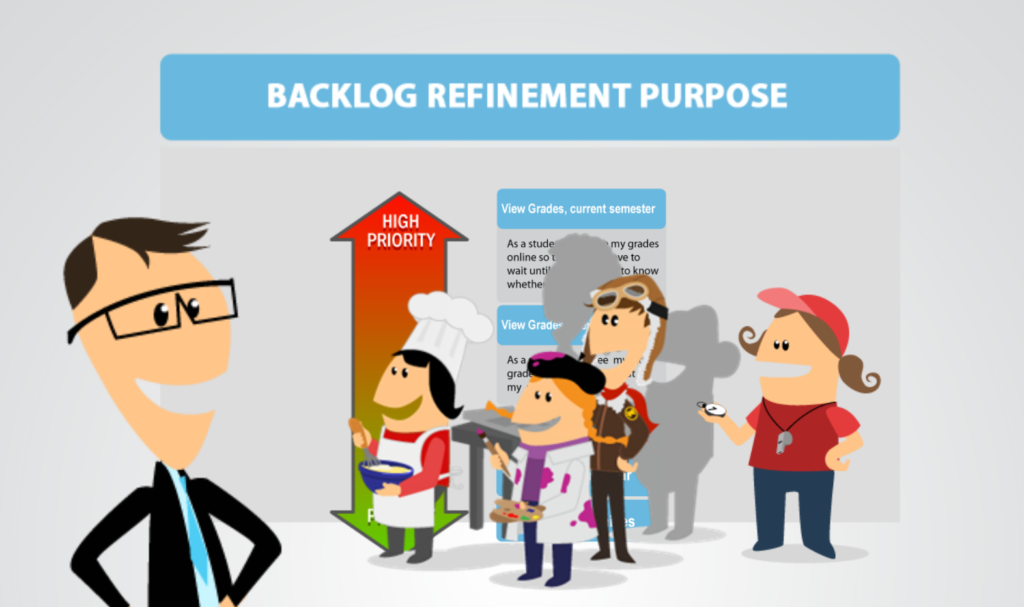Executive: “We’re an agile organization now.”
Project Manager: “Ok… but I’ve heard there are no Project Managers in Agile…”
Executive: “That’s right! I went to Agile Leadership Training last week, and they said we don’t need Project Managers anymore!!”
Project Manager: <silence>
Executive: “Oh, don’t worry, you’re not fired, haha! There’s this role called ‘Scrum Master’ that is pretty much the same thing as Project Manager!”
Project Manager: “So… I’m a Scrum Master now?”
Executive: “Yup, you’re a Scrum Master!”
Project Manager: “ok… cool.” (oh boy)
Well, Project Manager, congratulations – you’ve managed to retain employment for now. But as your org’s agile transformation sputters (as most do!), your managers and execs are going to start realizing that the Scrum Master role is quite different from that of the Project Manager.
The problem is, your boss probably doesn’t really know what a good Scrum Master even looks like. She may truly want you to succeed in this new role, but at the end of the day, your ability to have a positive impact at your company is going to come down to your own gumption. You’re going to have to figure this out on your own!
Luckily, the agile community is full of helpful people who are passionate about making the world of work better.
Before going any further, I need to warn you — there’s an air of arrogance among some in the agile community when it comes to “Project Managers.” Twitter and the blogosphere are peppered with snarky comments made towards “soon-to-be unemployed project managers” who are “wasting people’s time.”
My advice to you: Don’t be discouraged by these people. If you are taking your new role seriously enough to be researching how to do it (e.g. reading this post!), you’re already on the right track. Let the grumps be grumps, and get on with it.
 Grumps be grumpy.
Grumps be grumpy.…And with that out of the way, my hope in writing this is to reach Project Managers and others who have recently become Scrum Masters (by their own free will or otherwise) with a message from at least one friend in the agile community: You can do this!
Below are some steps you can take to begin to build and hone some new skills that you’ll need if you are going to be successful in this new world.
Step One: Take a class
This is a no-brainer. There are a million and one different Scrum Master courses you can take. I may be a tad biased, but if you have a bit of experience or basic understanding of Scrum, scrum.org’s Professional Scrum Master (PSM) class is a great place to start. You can find my upcoming classes here. The class was designed by Ken Schwaber and is maintained by the Professional Scrum Trainer community. And so you are getting the combined expertise of over 200 of the worlds top Scrum trainers. There are a number of other entry-level Scrum courses offered by various certification bodies such as Scrum Alliance, SAFe, etc. Do some research and find out which might be the best fit for you.

Many Scrum classes offer learning through Sprint simulation exercises
The bad news is that taking a class and passing the certification test isn’t going to magically transform you into the worlds best Servant Leader. The good news is that you’re going to get a working foundation upon which to build:
Terminology. This is an obvious one. But you’d be surprised how many people don’t actually know what the word “Sprint” means, or what a Story Point is (not to mention the fact that Story Points are not part of the Scrum framework!). It helps when we’re all speaking the same language.
An Agile support network. To repeat: you will not get everything you need from the course. But, by meeting people in your class who are going on the same journey, you’ll discover that people who are interested in Agile and Scrum are generally pretty helpful people! At the very least, your trainer is someone who has made a living helping people along the journey. They will likely be willing to help you out long after the class ends.
Anecdotes and reference points. Agile courses tend to be filled with anecdotes and real world examples of challenges that other companies have faced, and what worked (or didn’t) for them. Recalling these during your journey as a Scrum Master will certainly spark some ideas, or at the very least, help you start conversations with your peers.
Step two: READ EVERYTHING
Agile and Scrum have been around for a while now. It’s what you might call a ‘mature’ industry. Billions of dollars have been spent on Agile projects. Much of what we’ve learned as an industry has been captured in videos, blogs, books and other mediums. If you really want to improve yourself, learn from the experimentation of those who’ve come before you! Here are some good resources to get started on:
Scrum and XP from the Trenches (Henrik Kniberg — Free PDF!)
Succeeding With Agile (Mike Cohn)
Coaching Agile Teams (Lyssa Adkins)
Scrum Master Toolbox (Podcast — oikosofy)
Agile for Humans (Podcast, fellow PST Ryan Ripley)
Scrum Training Series (Michael James)

Step three: Get involved, get inspired

Attend agile conferences and events. If you live in a major city, there are likely already many agile-related conferences, meet-ups and user groups happening nearby. Do some googling, pick a few and attend them. Not only will you gain access to experts in the field, you’ll also realize that there are many other people going through the same struggles that you are. Understanding that we’re all trying to figure this stuff out together can serve to reduce the levels of stress and impostor syndrome you might be feeling. Plus these events tend to be really fun. At one point or another, you will probably be asked to play with Lego.
Another way to get involved is to join various forums and slack channels — these places are full of wonderful, knowledgable and helpful people. Two places to check out:
So those are three concrete steps you can take to start making your transformation from command-and-control Project Manager to servant leadership focused Scrum Master. There is a fourth step that I will quickly mention, with a small dose of self-promotion…
Get a coach!

This is especially necessary if your organization hasn’t internally built up a critical mass of people who have already undergone a personal transformation towards agility.
Meeting with an experienced coach every couple weeks will help you sort out which experiments you might want to try with your teams, and what kind of outcomes you should be shooting for. More importantly it will help you gain the confidence and courage needed to become a true agent of change in your organization.
If you are interested in 1 on 1 coaching, please feel free to contact me.

